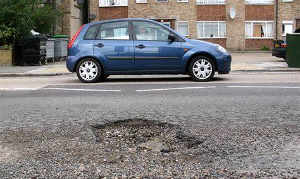Hard market expected through 2024, as cat losses to exceed $100bn: Swiss Re

Global reinsurance giant Swiss Re has said that it forecasts insurance industry losses from natural catastrophe events will exceed US $100 billion again in 2023, leading it to also forecast that non-life hard market conditions will be sustained through 2024, at least.
Swiss Re, in the latest sigma report from its Institute, is forecasting that 2023 will be the fourth consecutive year that insured catastrophe losses surpass $100 billion and the sixth year since 2017 for them to do so, on an inflation adjusted basis.
This comes at a time when property insurance markets are facing increasing claims quantum as well, driven by higher replacement costs today than two years ago, the reinsurance firm said.
Going on to explain that, “While cost pressure from construction materials has generally eased, higher wages and higher financing costs as a result of tighter monetary policy keep construction costs elevated.”
Adding that, “The global loss burden from natural catastrophes is also continuing to grow, and we estimate the long- term growth rate at 5%‒7% in inflation-adjusted terms since 1992.”
Exposure value growth, driven by ongoing construction in high-hazard areas, and rising replacement costs, are the most significant factors in driving catastrophe insured losses higher, Swiss Re explained.
The company further stated, “Based on our preliminary estimates, insured losses totalled at least USD 80 billion in the first nine months of 2023. This is above the 10-year average of USD 74 billion (inflation adjusted, nine-month period) and without any major peak peril loss event. Losses so far have been driven by severe convective storms in the US, while devastating earthquakes have added to the toll. At USD 6 billion in estimated insured claims, the February 2023 earthquake in Turkey and Syria is the costliest insured loss event this year so far.
“Year to date losses are characterised by a high number of low single-digit billion-dollar events, some of which represent loss severity records in their countries.”
As we’d previously reported, broker Gallagher Re has already estimate that insured catastrophe losses had exceeded $100 billion by the start of November.
With the non-life insurance sector facing challenging claims dynamics, including rising frequency and severity, while claims growth in liability lines is challenging insurability as well, the addition of another heavy catastrophe loss year is set to further stress matters.
Swiss Re said that, “These claims trends imply further hard market conditions for commercial and personal lines in 2024 at least.”
Further market hardening is expected in the medium term, as insurers and reinsurers try to keep pace with exposure and claims growth.
Hard market conditions, alongside improved investment returns, are improving insurer profitability, Swiss Re notes.
But still, the reinsurance firm warns that meeting cost-of-capital will remain challenged.
Jérôme Jean Haegeli, Swiss Re’s Group Chief Economist, said, “Fading economic tailwinds and geopolitical uncertainties reinforce the primary insurance industry’s essential role in risk transfer. While the sector will continue to strengthen its profitability, mainly driven by improved risk- adjusted pricing as well as higher investment returns, it is not yet expected to earn its cost of capital in 2024 or 2025 in most markets as economic inflation will continue to have a negative impact on claims costs.”
At the same time, Swiss Re says that interest rates are the most important component of industry returns at this time, suggesting the hardening of market pricing and improvements in terms and conditions, while beneficial, are not driving profitability on their own.
All of which suggests hard market pricing needs to be sustained for a time at least, which could provide the impetus needed to sustain a higher baseline level in insurance and reinsurance rates, once the cycle starts to soften again as it inevitably will in time.






